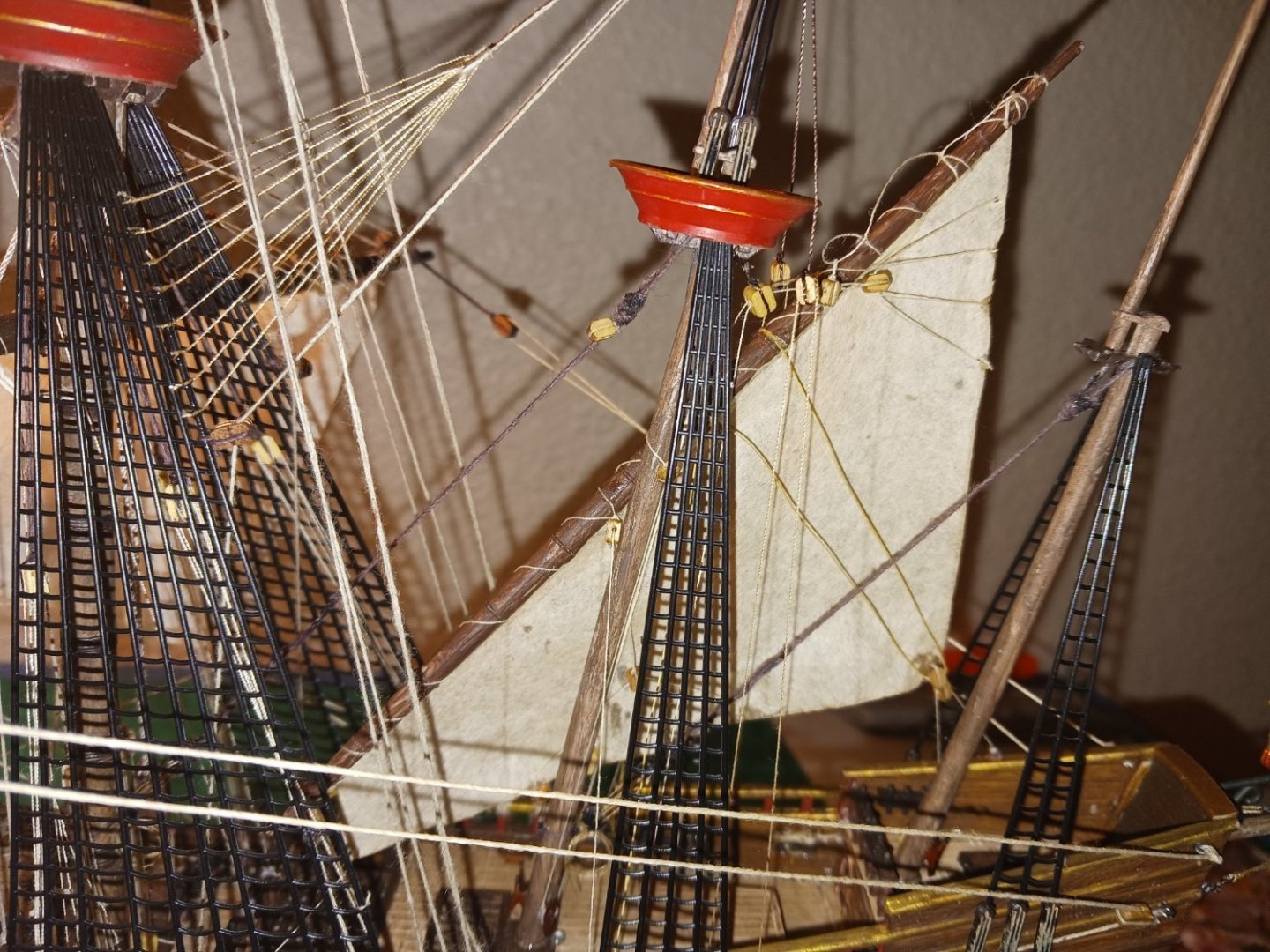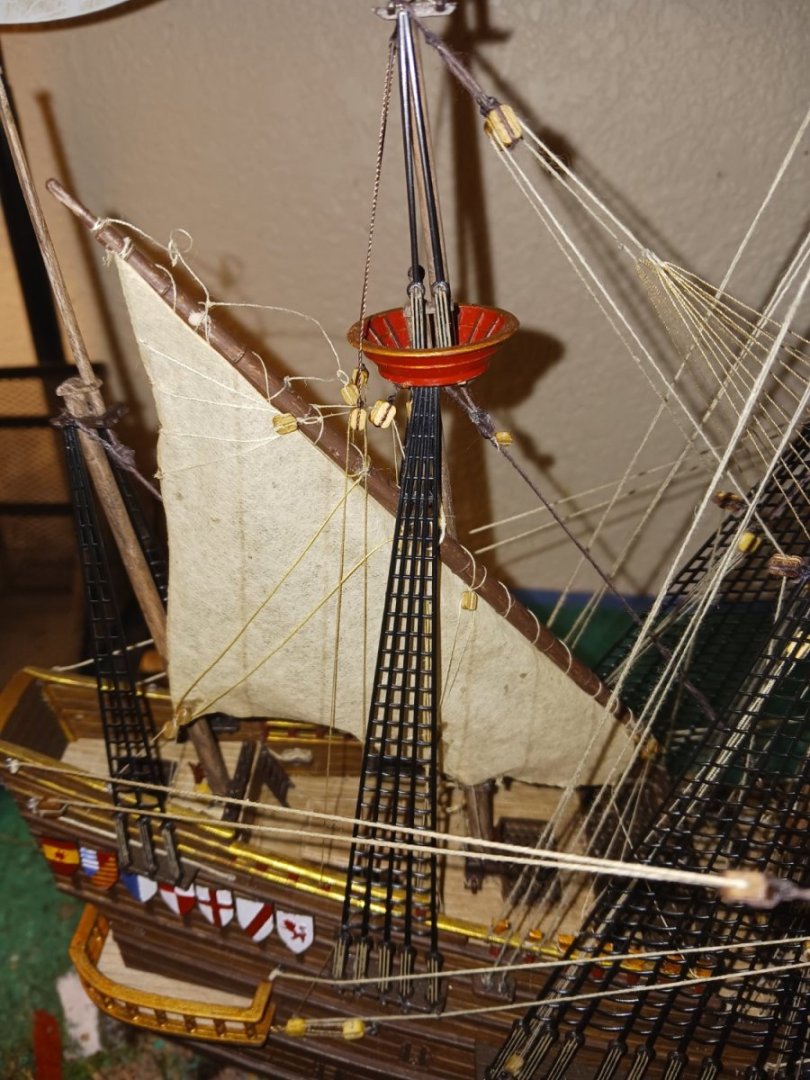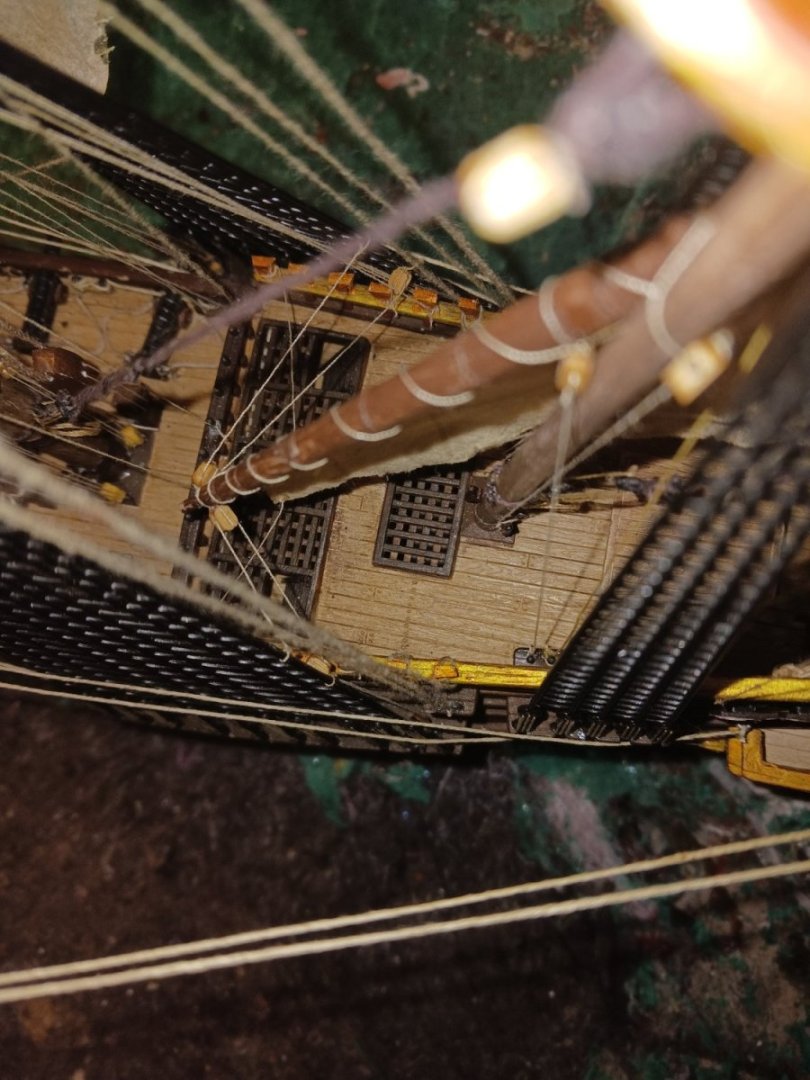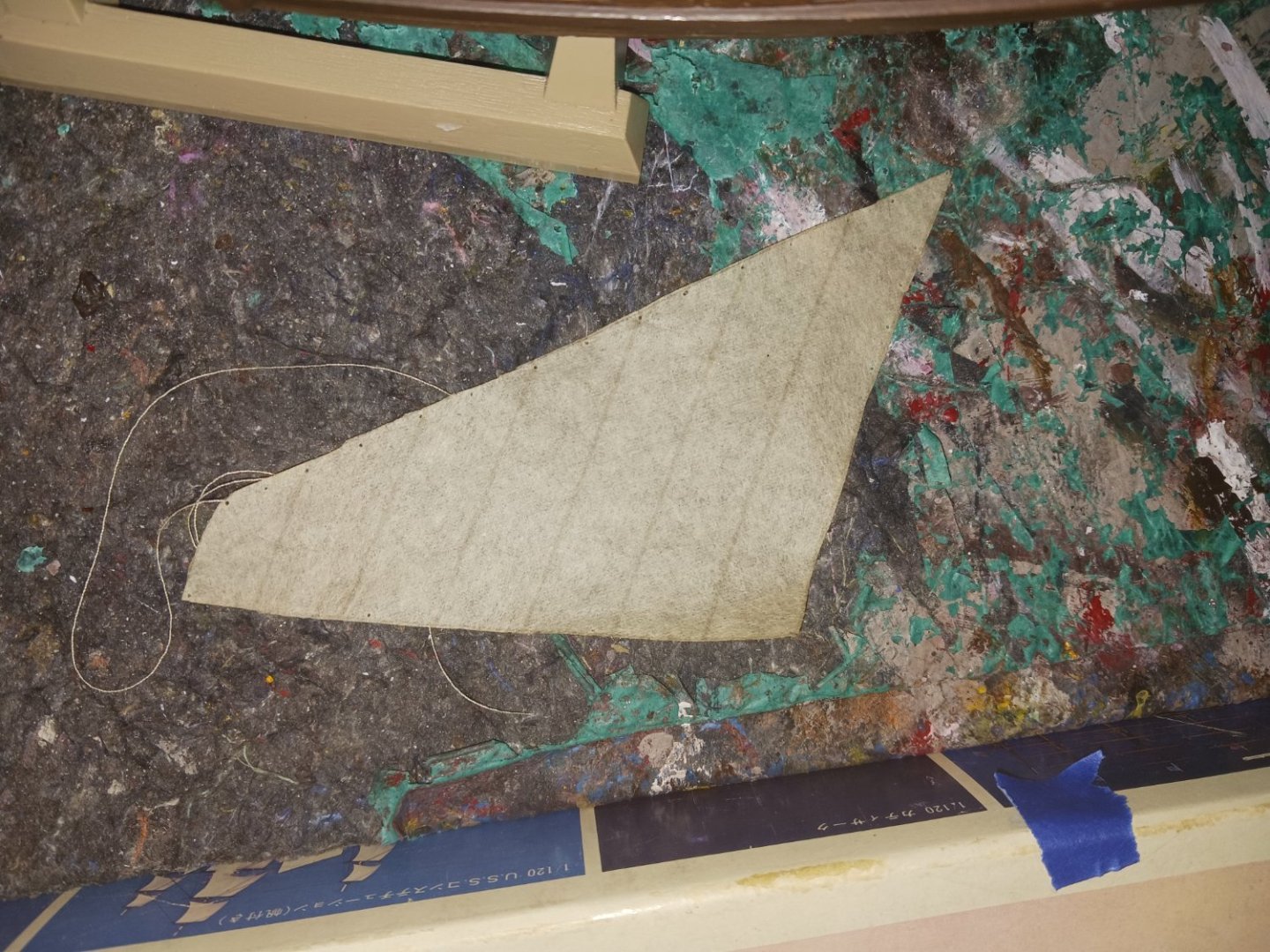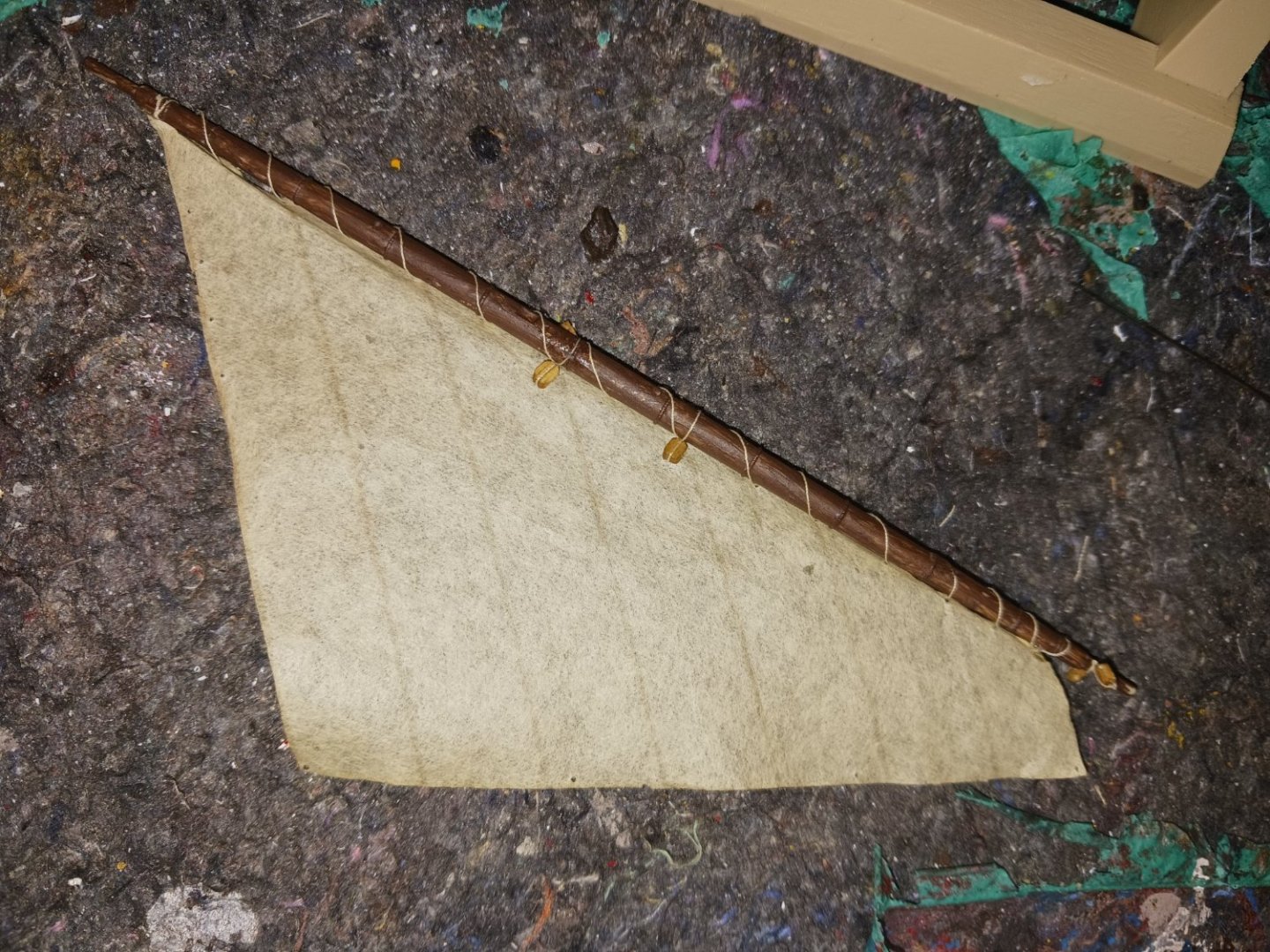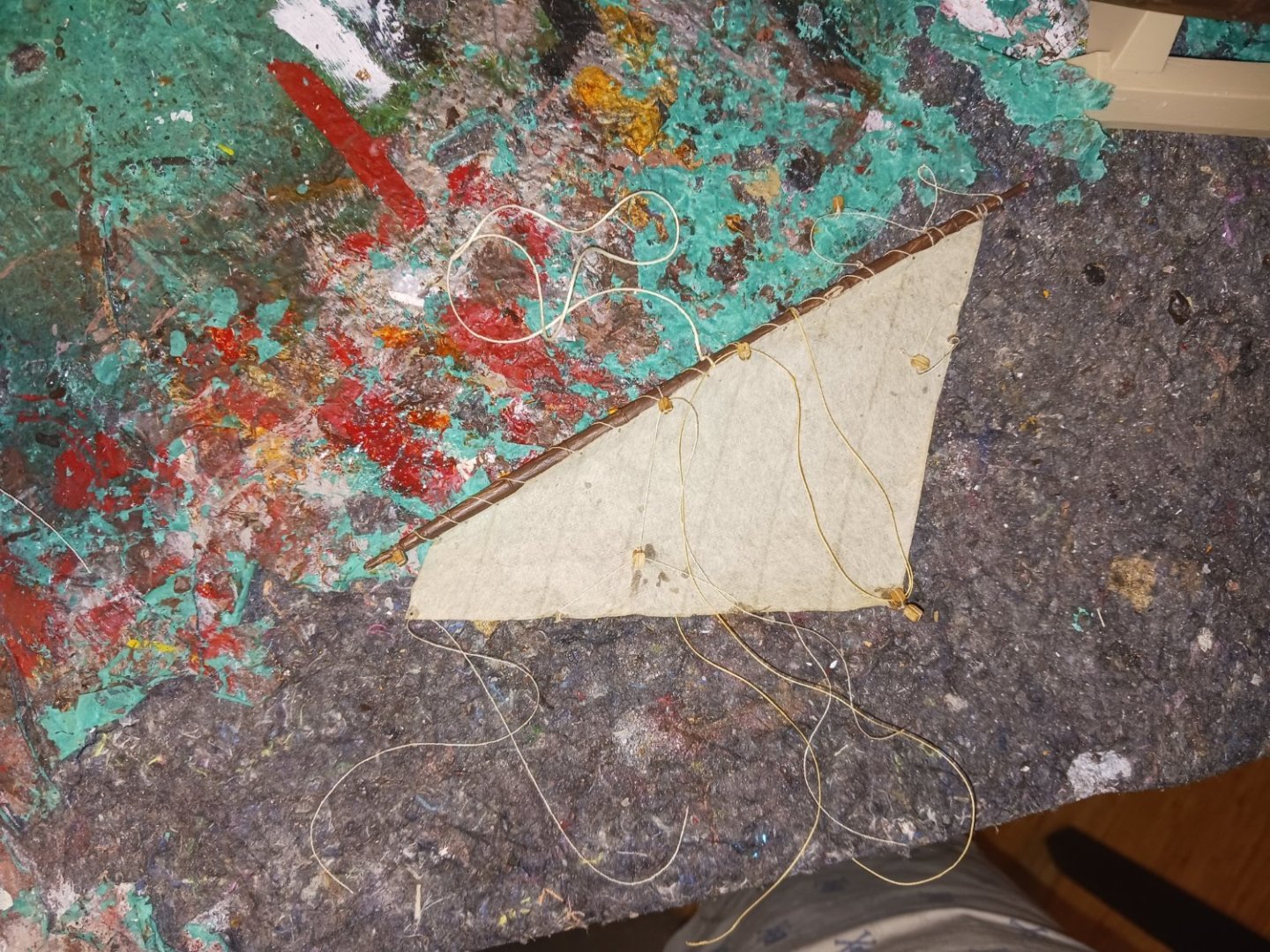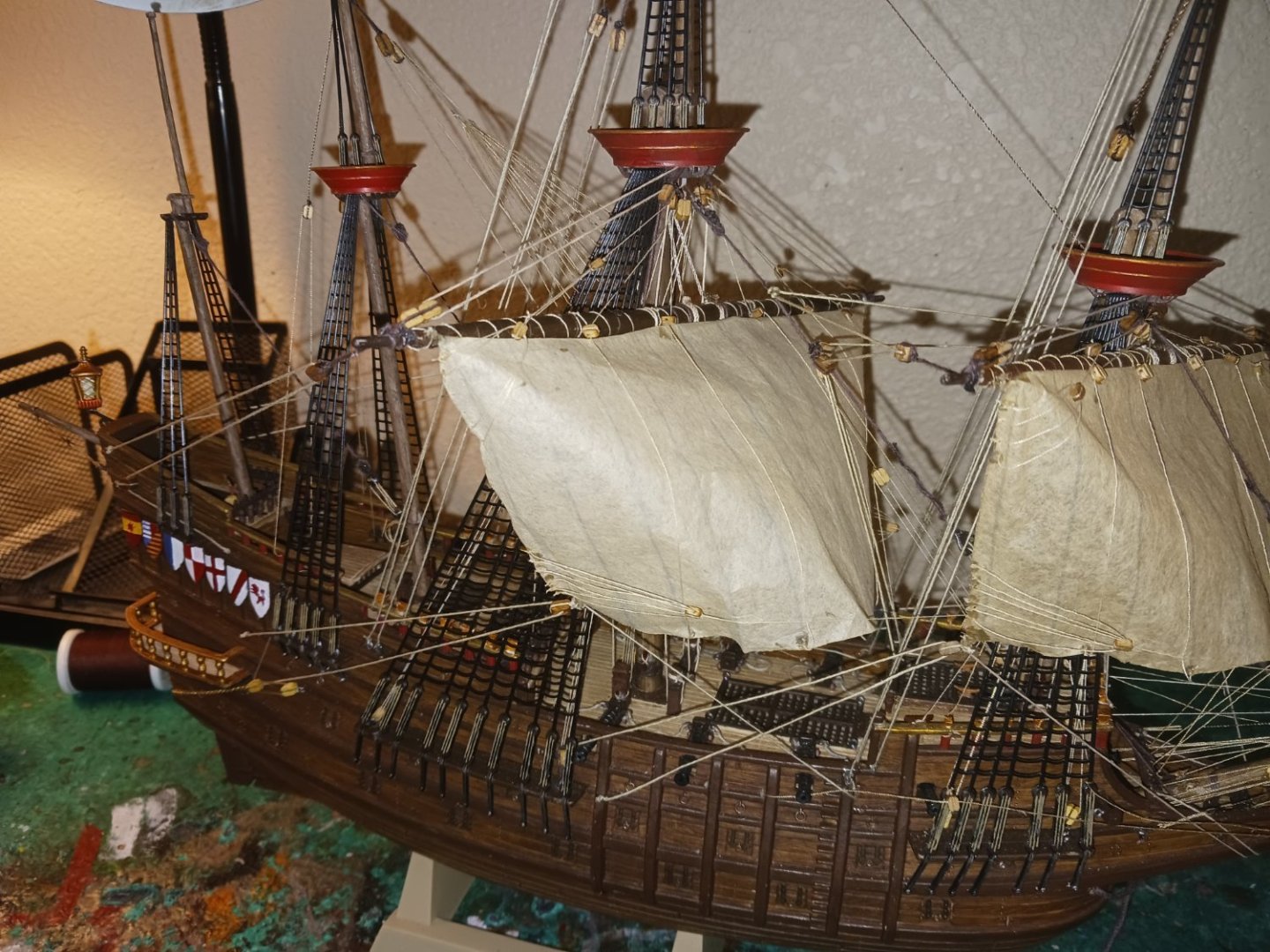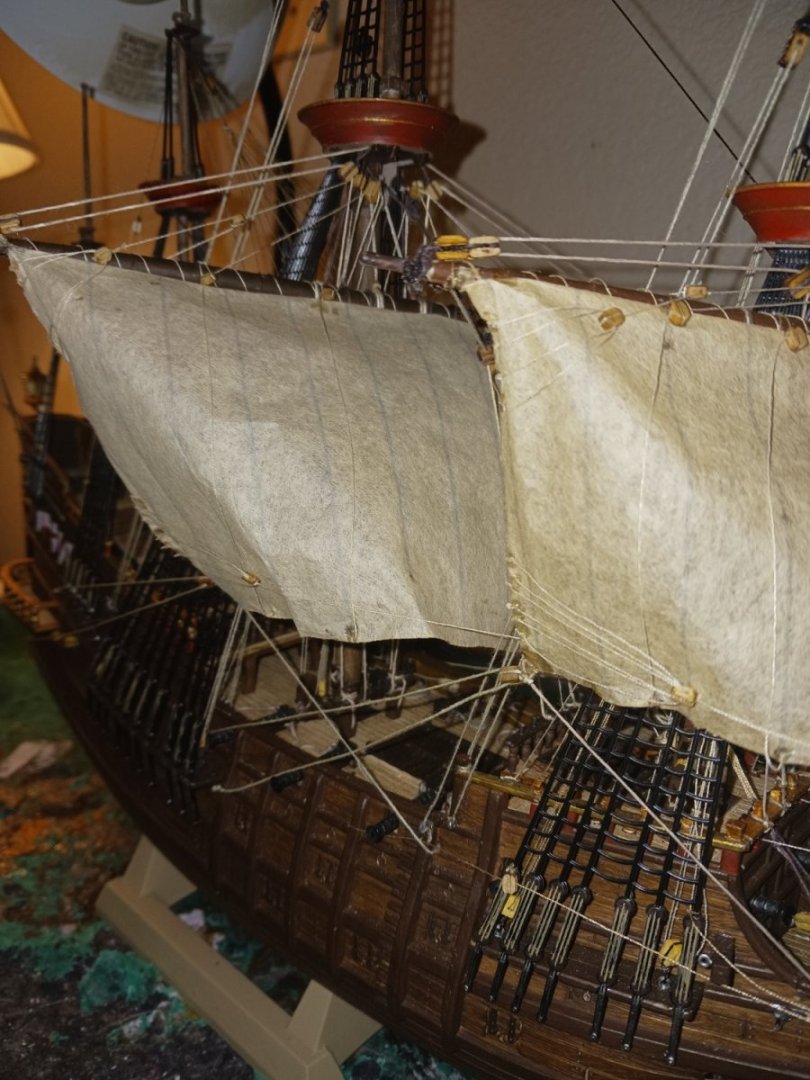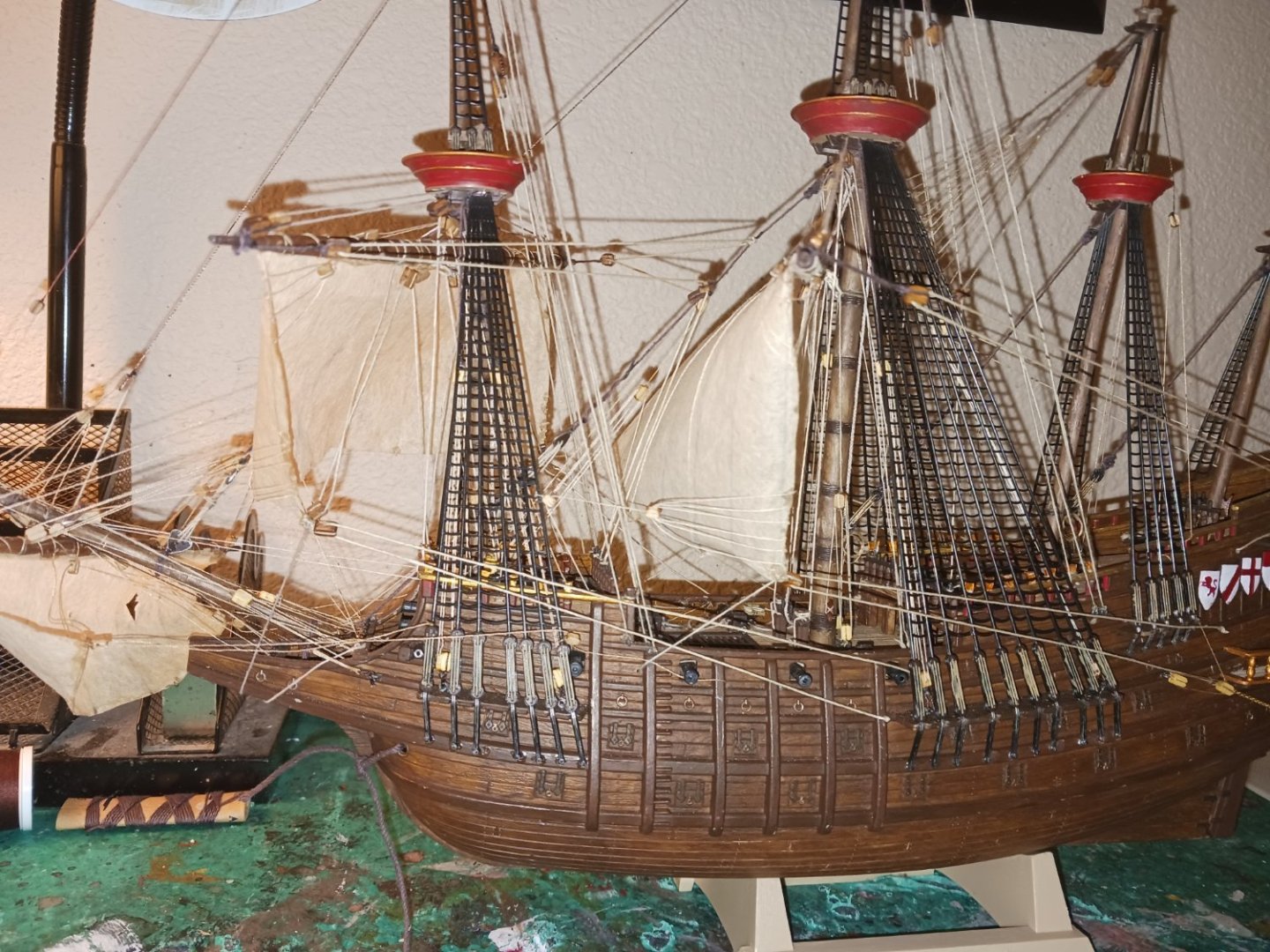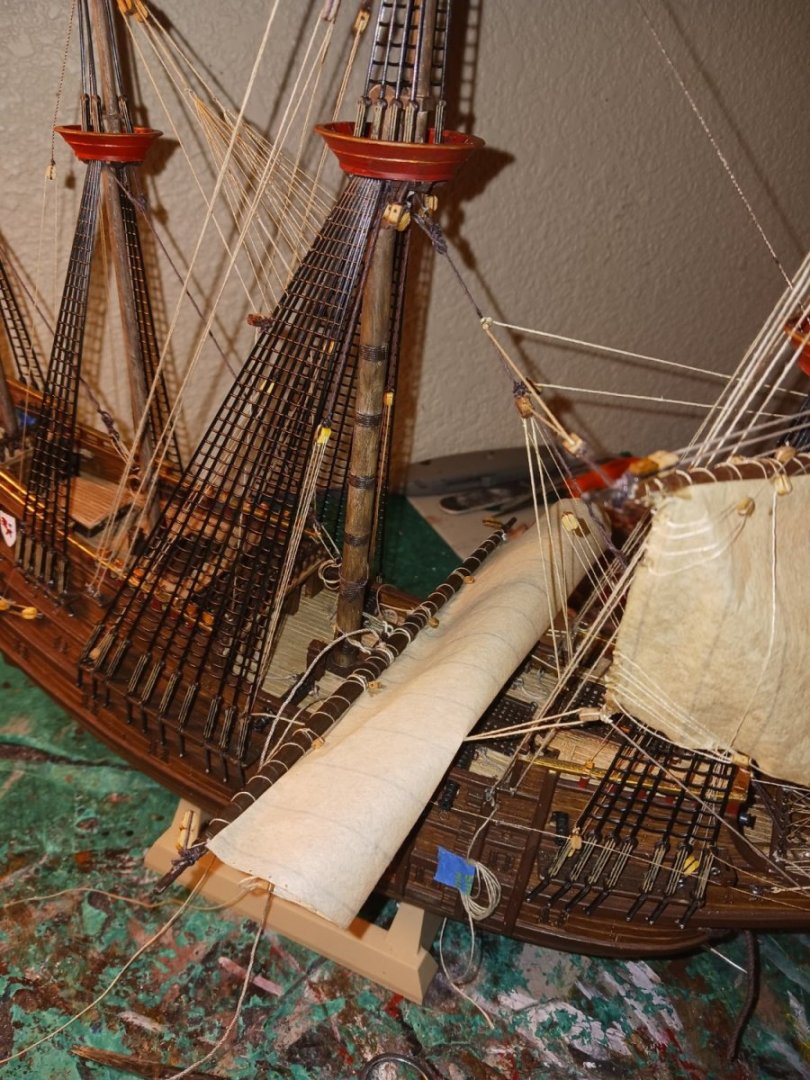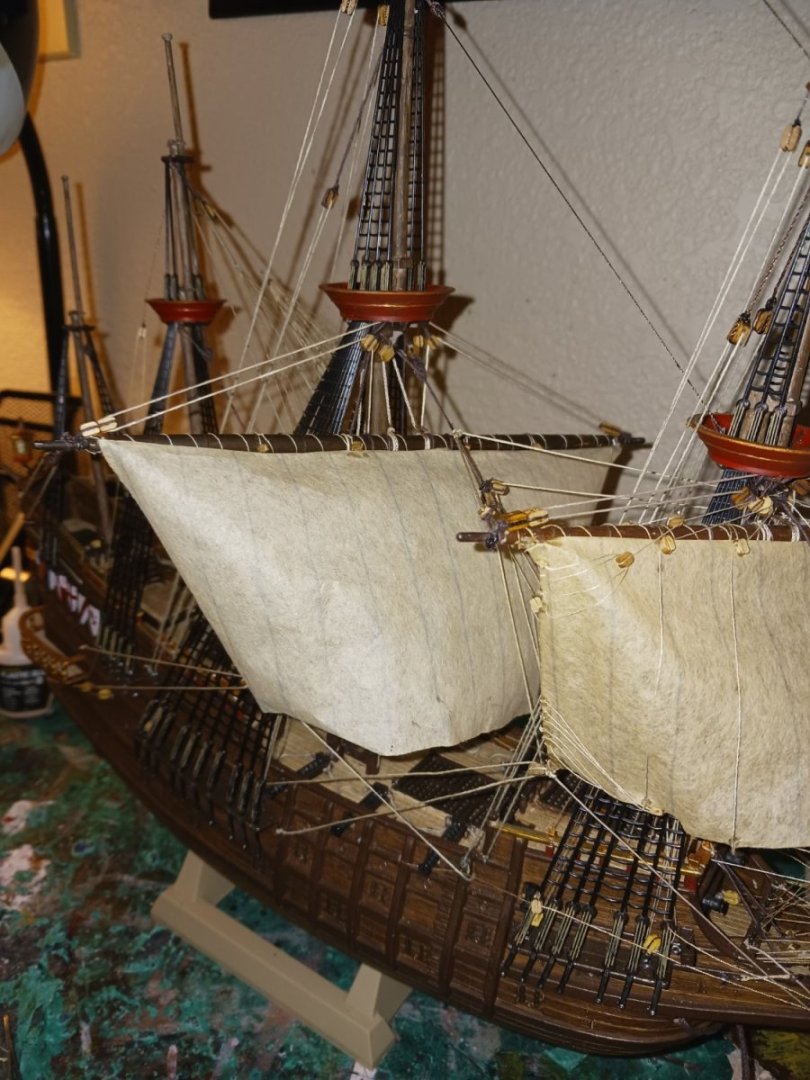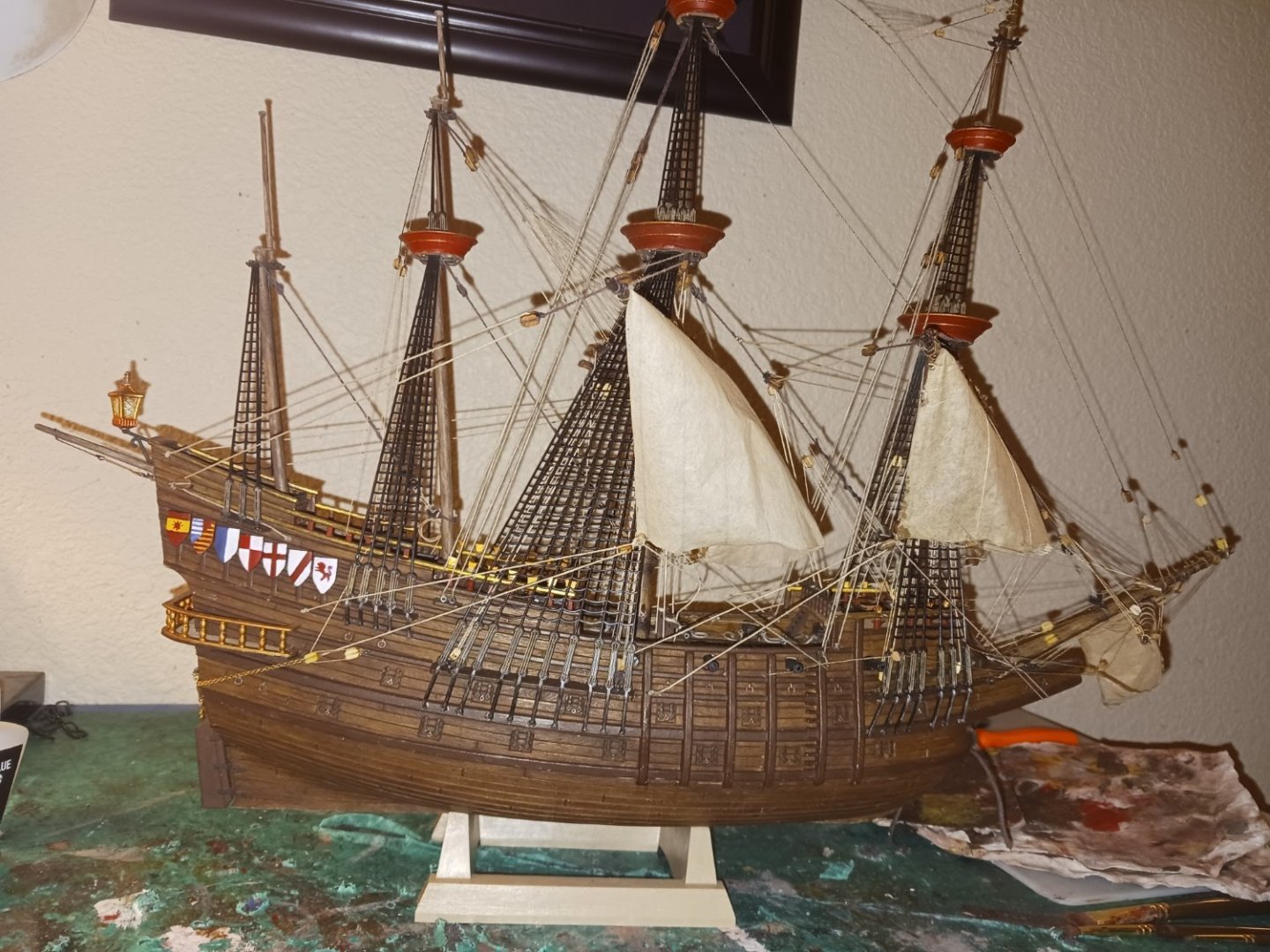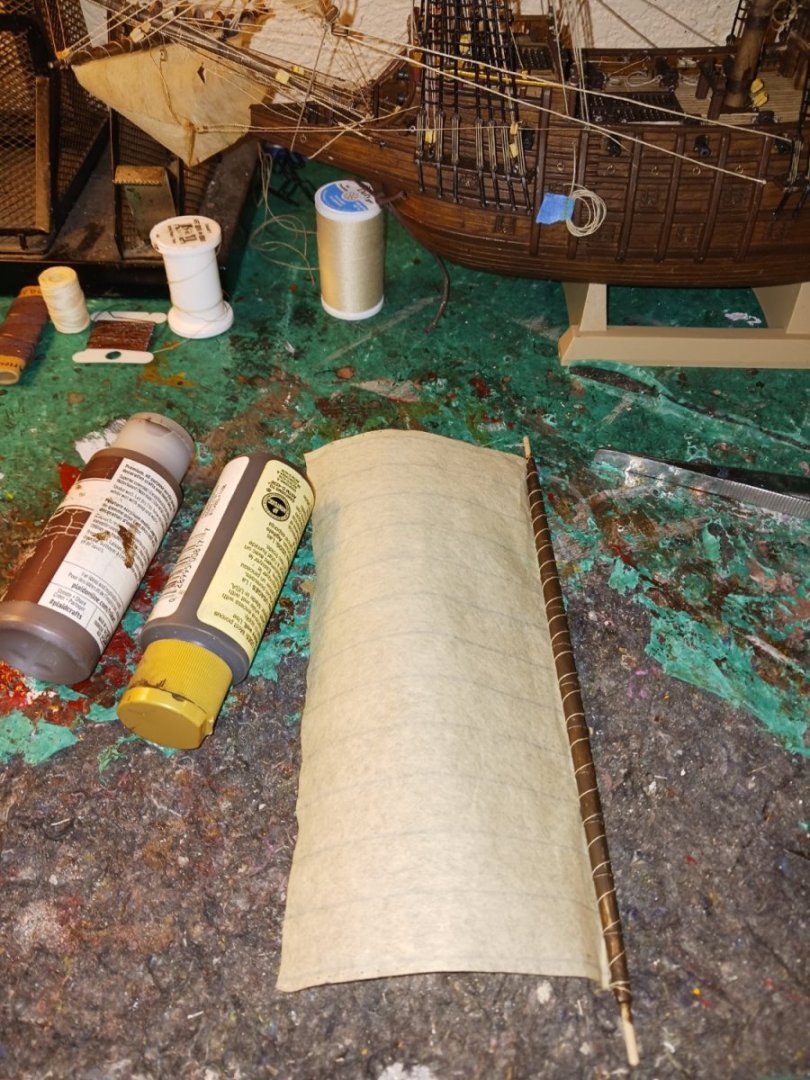-
Posts
1,389 -
Joined
-
Last visited
Content Type
Profiles
Forums
Gallery
Events
Everything posted by Ferrus Manus
-
More Kirill bait here! The mizzen Lateen sail is almost done! All that's left to do is the peak halyard.
- 279 replies
-
- Spanish Galleon
- Imai
-
(and 1 more)
Tagged with:
-
I would greatly appreciate it if you guys would come hang out at my Galleon build. Maybe we could throw a party on the deck! @72Nova (my name is also Michael) Your work is only eclipsed by the one and only Kirill. It genuinely looks so much larger than it really is, which makes it all the more impressive. To be honest, your ropework is absolutely incredible. You two would make an amazing duo, and i have much to learn from you.
-
Kirill!!! I cant believe you're back!! How was your fishing trip? My galleon is waiting for you. You certainly are a sight for sore eyes.
-
I kind of feel bad continuing the build before @kirill4 checks my work. We'll wait for his approval. Lots has changed since he was last here.
- 279 replies
-
- Spanish Galleon
- Imai
-
(and 1 more)
Tagged with:
-
Over the last two days, i rigged the lines for the mizzen lateen sail. The reason i rigged the lines now instead of on the ship was the issue of room on the ship. As we go progressively aft and up on the ship, it gets narrower and narrower. This issue of room also boils down to the massive number of shrouds on the main mast. At least i have enough room to belay everything.
- 279 replies
-
- Spanish Galleon
- Imai
-
(and 1 more)
Tagged with:
-
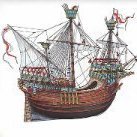
Greetings from Ukraine from Igmar.
Ferrus Manus replied to Igmar's topic in New member Introductions
Welcome to MSW!! I look forward to seeing your builds. Feel free to ask questions and, of course, show off your talent! Perhaps you would like to visit my Galleon? I look forward to further interactions with you very much. -
This is the finished mainyard, after the martnets and bowlines were completed. I actually had to stop belaying lines on the rails just in front of the sterncastle bulkhead, as it just got too inaccessible. I opted instead for the bulkhead rail itself. If only i had an inch tall mini-me to help me out. Got that nice feel of a legitimate contemporary painting. What i genuinely love about this model is that it legitimately shows an action scene, instead of the sails and rigging just sort of hanging there. Personal preference.
- 279 replies
-
- Spanish Galleon
- Imai
-
(and 1 more)
Tagged with:
-
That actually happened during the Siege of Tenochtitlan in 1521. They built a trebuchet without combat engineers, and it did exactly that. Last time the weapon was ever used in combat. Both the Spanish and Aztec versions of the story recall, in detail, the trebuchet incident. Look it up.
- 142 replies
-
Mind you, this build has never been unfun. I just needed a short breather from the insane amount of experimentation. Anyways, back to the show. Today i got the main course mostly completed. I did about the same process as i did on the fore, just over a larger area. I did something interesting on this sail. I purposely kept the yard lower than it should be, in order to give the sail the room to properly billow, as per many paintings of the time.
- 279 replies
-
- Spanish Galleon
- Imai
-
(and 1 more)
Tagged with:
-
Oh come on, dude. I need an opinion, not affirmation. Thank you for the encouragement.
- 279 replies
-
- Spanish Galleon
- Imai
-
(and 1 more)
Tagged with:
-
Been really tired the past several weeks, so i haven't done anything on the build. Anyway, i recently acquired a 1/50 scale viking ship. Simple build. Should i do that in the meantime to calm my nerves, or should i continue with the galleon and then do the viking ship when it's done?
- 279 replies
-
- Spanish Galleon
- Imai
-
(and 1 more)
Tagged with:
-
The 2017 instructions are absolutely horrendous. Use the old instructions.
- 89 replies
-
- Cutty Sark
- Revell
-
(and 2 more)
Tagged with:
-
I bent the main course to the yard. On the left of the yard, you will see two paint bottles on their side. This is intentional. After i lashed the sail, i inserted the foot of said sail between the two paint bottles. Then, i draped the sail over the one on the right. Leaving it for the good majority of a day resulted in the curve you see in the sail. The purpose of this was not to finalize the curvature of the sail, but instead to encourage it to remember a rough shape, making it more willing to obey the lines that will eventually attach to the free corners of the sail, which will finalize the billow.
- 279 replies
-
- Spanish Galleon
- Imai
-
(and 1 more)
Tagged with:
-
Little update, here. I won't be able to work on the ship until probably Wednesday, for lack of blocks. Will get more then, likely. Main course coming up next! (wordplay fully intended)
- 279 replies
-
- Spanish Galleon
- Imai
-
(and 1 more)
Tagged with:
-
Not quite finished yet, mate. You'll pass out when you see the monstrous amount of rigging that goes on the bow. Check out my Spanish Galleon build, it's about twice that much. Truly obscene amounts of hemp.
- 1,508 replies
-
- Le Soleil Royal
- Heller
-
(and 1 more)
Tagged with:
-
Positively magnificent. Someone ought to remind me to take a peek once in a while.
- 89 replies
-
- Cutty Sark
- Revell
-
(and 2 more)
Tagged with:
-
@Louie da fly congrats on restating what i said in a better and more descriptive manner 😏
- 177 replies
-
- Perseverance
- Modellers Shipyard
-
(and 1 more)
Tagged with:
-
Check out any build log of the H.M. Cutter Cheerful, namely the Vanguard kit by our own Chuck Passaro. Pay close attention to the planking thereof.
- 177 replies
-
- Perseverance
- Modellers Shipyard
-
(and 1 more)
Tagged with:
-
nothing. However, adding drop planks and a tangible plank shift would help. Also, wider wales and rubbing strakes and scarf joints. Lots of scarf joints.
- 177 replies
-
- Perseverance
- Modellers Shipyard
-
(and 1 more)
Tagged with:
-
Jokes on you!! I can plank the Senora Fielden however i want because it's almost 600 years old and almost no historical evidence exists for how it was planked!
- 177 replies
-
- Perseverance
- Modellers Shipyard
-
(and 1 more)
Tagged with:
-
I guess you could refer to this as a work of art, and you wouldn't be wrong. However, i see it as more of a living sculpture or a 3D technical drawing. I will admit, i do feel proud of myself when some of my images look like enhanced close-ups of a Vroom painting.
- 279 replies
-
- Spanish Galleon
- Imai
-
(and 1 more)
Tagged with:
-
This vessel comes from that nightmarish period when the Mary Rose had stopped being a useful source material, but before admiralty models became a thing.
- 279 replies
-
- Spanish Galleon
- Imai
-
(and 1 more)
Tagged with:
About us
Modelshipworld - Advancing Ship Modeling through Research
SSL Secured
Your security is important for us so this Website is SSL-Secured
NRG Mailing Address
Nautical Research Guild
237 South Lincoln Street
Westmont IL, 60559-1917
Model Ship World ® and the MSW logo are Registered Trademarks, and belong to the Nautical Research Guild (United States Patent and Trademark Office: No. 6,929,264 & No. 6,929,274, registered Dec. 20, 2022)
Helpful Links
About the NRG
If you enjoy building ship models that are historically accurate as well as beautiful, then The Nautical Research Guild (NRG) is just right for you.
The Guild is a non-profit educational organization whose mission is to “Advance Ship Modeling Through Research”. We provide support to our members in their efforts to raise the quality of their model ships.
The Nautical Research Guild has published our world-renowned quarterly magazine, The Nautical Research Journal, since 1955. The pages of the Journal are full of articles by accomplished ship modelers who show you how they create those exquisite details on their models, and by maritime historians who show you the correct details to build. The Journal is available in both print and digital editions. Go to the NRG web site (www.thenrg.org) to download a complimentary digital copy of the Journal. The NRG also publishes plan sets, books and compilations of back issues of the Journal and the former Ships in Scale and Model Ship Builder magazines.


